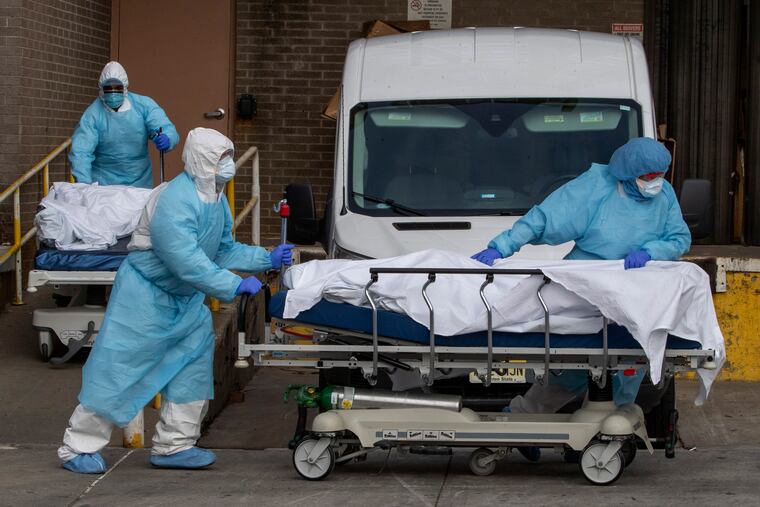Coronavirus outbreaks — social distancing — may continue into 2022, Harvard experts find
Remaining in hiding from the coronavirus is not sustainable. But infections won't automatically stop when the U.S. reopens.

Coronavirus infections will rebound and threaten to overwhelm hospitals when current social distancing measures are lifted, so prolonged or periodic restrictions may be needed for two more years, according to mathematical modeling by Harvard University’s Chan School of Public Health.
The study, published Tuesday in the journal Science, comes as the governors of Pennsylvania, New Jersey, Connecticut, Delaware, New York, and Rhode Island are conferring on when and how to safely lift stay-home orders and reopen their states’ economies. Meanwhile, the Trump administration has cited a University of Washington model that predicts the U.S. outbreak will taper off at the end of May, enabling a return to normalcy.
“Even in the event of apparent elimination," the Harvard researchers wrote, coronavirus "surveillance should be maintained, since a resurgence in contagion could be possible as late as 2024.”
Senior author Marc Lipsitch added during a Tuesday teleconference: “Predicting an end to the pandemic in the summer ... is not consistent with what we know.”
Lipsitch and his coauthors stressed that no one knows the answers to vitally important questions about natural protection: Are people who recover from COVID-19 fully immune to the virus, and for how long? Blood tests that could provide insights by detecting disease-fighting antibodies are just now coming on the market — but many are proving to be unreliable.
Given the uncertainties, the researchers modeled various estimates of immunity, of how much infections wane in hot months, and of social distancing, to predict the future spread of coronavirus.
» READ MORE: Coronavirus math shows the importance of social distancing, and the horrible consequences of not doing it
Under all simulations — including one-time social isolation and intermittent isolation — infections surged when the restrictions were lifted. The worst-case scenario was early, stringent distancing followed by no controls. That unleashed an especially large wave of disease in the winter, a pattern seen with the 1918 flu pandemic that infected a quarter of the world’s population and killed as many as 100 million people.
The model also showed the consequences of too much isolation. A 20-week period of social and economic shutdown was so effective at reducing virus transmission “that virtually no population immunity was built," which in turn intensified the next peak in the roller coaster of disease and death.
A number of public health efforts could improve the outlook, the researchers wrote. These include more diagnostic testing and rigorous contact tracing, expanded critical-care capacity in hospitals, accurate blood antibody testing, effective treatments for COVID-19, and the greatest hope — a vaccine against the virus.
“We do not take a position on the advisability of these scenarios given the economic burden that sustained distancing may pose,” the researchers concluded, “but we note the potentially catastrophic burden on the health-care system that is predicted if distancing is poorly effective and/or not sustained for long enough.”